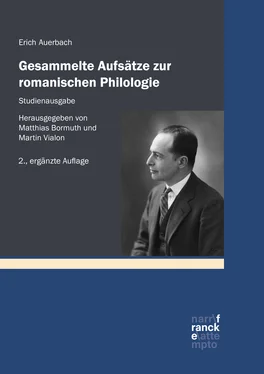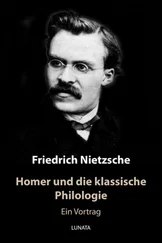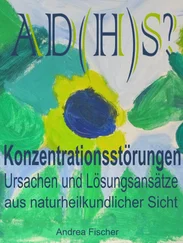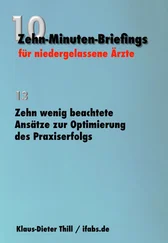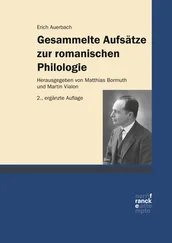The historical and human character imparted to Christian eulogies by the earthly history of Christ was of great importance in the poetry of the Middle Ages, especially in the vernacular languages. In early Latin hymnsHymne, however, detailed and complete records of Christ’s life are not frequent. One may think of the ‘Hymnus de Vita Christi’, by SeduliusSedulius;26 but it is an abecedarius, not a eulogy in a prayerLobrede. In most ancient eulogies, the events of Christ’s life are not related in a coherent narrative fashion; rather are certain basic facts chosen for a dogmatic purpose; this is the case in the above quoted ‘Laus Christi’ or in the following lines taken from the ‘Te Deum’:
Tu rex gloriae Christus,
Tu patris sempiternus es filius,
Tu ad liberandum suscepisti hominem,
Nec horruisti Virginis uterum;
Tu devicto mortis aculeo aperuisti credentibus regna coelorum …
Very often, the link between the historical events and the dogma is expressed in a symbolic manner; the events are recorded in a concrete and, sometimes, even realistic formRealismus, but within a symbolic context. The following stanzasStanze from the Ambrosian hymnHymneAmbrosius, hl. ‘De adventu Domini’27 offer an early example of the absorption of realistically presented events by dogmatic symbolism. It is a eulogy in narrative form, without anaphoras:
| 5 |
Non ex virili semine, Sed mystico spiramine Verbum Dei factum est caro Fructusque ventris floruit. |
17 |
Egressus eius a patre, Regressus eius ad patrem Excursus usque ad inferos, Recursus ad sedem patris. |
| 9 |
Alvus tumescit virgins, Claustrum pudoris permanet, Vexilla virtutum micant, Versatur in templo Deus. |
21 |
Aequalis aeterno patri Carnis tropaeo cingere Infirma nostri corporis Virtute firmans perpeti. |
| 13 |
Procedens thalamo suo Pudoris aula regia Geminae gigas substantiae Alacris ut currat viam. |
25 |
Praesepe iam fulget tuum Lumenque nox spirat suum … |
From Christ’s stay in his mother’s body and from his birth, there is a direct symbolic link to the dogmatic meaning of incarnation; history is abandoned, and only at the end reappears the praesepe Praesepium, praesepe , just as an effulgent symbol.
(d) The symbolism of the Ambrosian text is expressed by allusions to passages of the Bible; this gives to the eulogy a figurative or typological aspect; figuralism is another new phenomenon in the eulogies, introduced by Christian influence.
Christ as the sponsor procedens de thalamo suo 28 and as a giant who ‘runs a race’ (VV. 13–16) is an allusion to Ps. 18, 6; through the attribute geminae substantiae this giant becomes connected with the Gigantes in Gen. 6, 1–4, the offspring of the sons of God who took wives the daughters of men; these giants were, consequently, of dual nature; thus, they were considered as prefiguration (or figures, or types) of Christ. The egressus-regressus image egressus–regressus-Bild (vv. 17–18) refers to v. 7 of the same Psalm, connecting it with JohnJohannes (Evangelist) 16, 5 and 16, 16, and alluding also to passages such as Is. 11, 1, or 51, 5, or Hab. 3, 13.29
Long before St. Ambrose, the figurative interpretationFiguraldeutung which appears in these lines had changed the entire Old TestamentAltes Testament into a series of prefigurations of Christ, his incarnation and passion, and of the Church. It developed in the earliest periods of Christianity; its growth was so rapid that the whole system including almost all its details was already familiar to the Christian writers of the second and early third centuries, e. g. to TertullianTertullian. However, the consistent use of the figurative interpretation is infrequent in hymnsHymne of the patristic period. There are many figurative allusions, especially in the hymns of FortunatusVenantius Fortunatus; but the long series of figures which appear in the Middle Ages do not yet occur.
In the Middle Ages, the consistent use of typological or figurative interpretationFiguraldeutung gives to the hymnic eulogies a very specific aspect; the history of salvation through Christ’s incarnation becomes the leitmotif of the providential harmony of world history. In the flowering period of mediaeval Latin hymnology, the twelfth and thirteenth centuries, the metaphors furnished by the figurative interpretation are fused, in a high developed technique, with another kind of figures: plays on rhymes and sounds which, in numerous particular cases and seen as a whole, also have a symbolic meaning. This confers upon the hymns a very characteristic form of witticism, unique at its level of style, although it may be possible to find some parallels in certain later periods of poetry.30 We shall try to analyse several specimens, beginning with one of the sequences of Notker BalbulusNotker Balbulus († 912), the inventor of the sequence form. He uses the tu anaphoraAnaphertu-Anapher in several of his works; I have chosen the sequence ‘In Purificatione Beatae Mariae’:31
| 1 |
Concentu parili hic te, Maria, veneratur populus teque piis colit cordibus. |
|
|
| 2 |
Generosi Abrahae tu filia veneranda, regia de Davidis stirpe genita. |
3 |
Sanctissima corpore, castissima moribus, omnium pulcherrima virgo virginum. |
| 4 |
Laetare, mater et virgo nobilis Gabrielis archangelico quae credula oraculo genuisti clausa filium. |
5 |
In cuius sacratissimo sanguine emundatur universitas perditissimi generis ut promisit Deus Abrahae. |
| 6 |
Te virga arida Aaron flore speciosa praefigurat, Maria, sine viri semine nato floridam. |
7 |
Tu porta iugiter serrata quam Ezechielis vox testatur, Maria, soli Deo pervia esse crederis. |
| 8 |
Sed tu tamen matris virtutum dum nobis exemplum cupisti commendare, subisti remedium pollutis statutum matribus. |
9 |
Ad templum detulisti tecum mundandum, qui tibi integritatis decus Deus homo genitus adauxit intacta genetrix. |
| 10 |
Laetare, quam scrutator cordis et renum probat proprio habitatu singulariter dignam, sancta Maria. |
11 |
Exsulta, cui parvus arrisit tunc, Maria, qui laetari omnibus et consistere suo nutu tribuit. |
| 12 |
Ergo quique colimus … |
|
|
The eulogy which runs from the second stanzaStanze to the eleventh is introduced partly by tu anaphorasAnaphertu-Anapher, partly by imperatives followed by relative clauses ( Laetare … quae ; Laetare, quam ; Exsulta, cui ); not all its parts are purely figurative, but there is in almost every stanza some figurative allusion fused with the historical and dogmatic content. We shall begin by explaining several of these allusions.
Second stanzaStanze: the designation of the Virgin as filia generosi Abrahae contains an allusion to Christ as high priest secundum ordinem Melchisedek , Hebr. 7 and Gen. 14, 18ff.32 Fifth stanza: the words ut promisit Deus Abrahae refer to Gen. 22, 18 ( et benedicentur in semine tuo omnes gentes terrae ), i. e., to the sacrifice of Isaac; the blood of the ram offered instead of Isaac is figura sanguinis Christi.
Sixth stanza: the virga arida Aaron (Num. 17, 8) is explained by the following lines. This is one of the most recurrent of the figurative combinations symbolizing the conception of Christ; it was supported by another even more famous passage: et egredietur virga de radice Jesse, et flos de radice eius ascendet (Is. 11, 1). Later on, there are many puns on the words virgo and virga. Mary is called virgo virga salutaris in a hymn of the twelfth century,33 and St. Bernard designates Christ as virga virgo virgine generatus .34
Читать дальше
